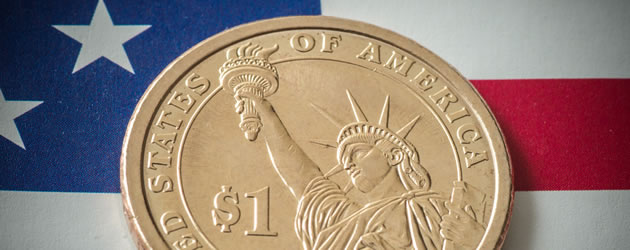Pound Sterling US Dollar (GBP/USD) Exchange Rate Slides on Prospect of Worst Economic Contraction in Decades
The Pound Sterling US Dollar (GBP/USD) exchange rate edged around -0.3% lower, leaving the pairing trading at around $1.2362.
Wednesday saw the US Dollar edge higher against a handful of currencies, buoyed by its safe-haven status amongst investors.
Traders flocked to the safety of the Dollar as the world seemed to be staring at one of the worst global economic contractions for decades thanks to the coronavirus pandemic.
However, ‘Greenback’ was still left well below earlier multi-year highs against a handful of currencies after the US Federal Reserve pumped Dollars into the system.
Added to this, yesterday saw the Fed broadened the ability for many central banks around the world to access the safe-haven currency during the pandemic. The US central bank allowed other central banks to exchange holdings of US Treasury securities for overnight USD loans.
Commenting on this, Kyle Rodda, analyst at broker IG Markets in Melbourne noted:
‘The whole experience is testing the maxim in the market of ‘don’t fight the Fed’.
‘The Fed clearly wants to do everything it can necessary to ensure Dollar liquidity, which puts downward pressure on the Dollar.
‘But by the same token there is still this very structural push to buy Dollars right now because liquidity is coming at an absolute premium with so much risk in the market.’
Pound (GBP) as Manufacturing Business Optimism Plummets to Record Low
Sterling slumped against the ‘Greenback’ this morning after PMI data revealed British manufacturing output and new orders slumped at the fastest rates since mid-2012.
The UK’s manufacturing PMI fell to 47.8 from the earlier March flash estimates of 48.
Markit showed that business optimism had plummeted to a series low, while the disruption to supply chains intensified.
Commenting on this morning’s data, Rob Dobson, Director at IHS Markit said:
‘The latest survey numbers underscore how the global outbreak of COVID-19 is causing huge disruptions to production, demand and supply chains at UK manufacturers. Output and new orders fell at the fastest rates since mid-2012, while supplier delivery times lengthened to the greatest extent in the 28-year survey history as shortages grew more widespread. The resulting job losses took the rate of decline in employment to its highest since July 2009.
‘With restrictions aimed at slowing the spread of the virus expected to stay in place for some time, expectations of further economic disruption and uncertainty meant business optimism slumped to a series-record low. However, on a slightly more positive note, manufacturers still expect to see output higher in one year’s time.’
Pound US Dollar Outlook: Fed’s Preferred PMI in Focus
Looking ahead to this afternoon, the US Dollar (USD) could give up some of today’s gains against the Pound (GBP) following the release of US PMI data.
If the Federal Reserve’s preferred ISM manufacturing PMI slumps further than expected, the ‘Greenback’ will be left under pressure.
On Thursday, further weak US economic data could dampen Dollar sentiment further.
If data reveals the US trade balance has suffered due to the coronavirus, while factory orders plummet further than expected, the Pound US Dollar (GBP/USD) exchange rate could edge higher.


Comments are closed.